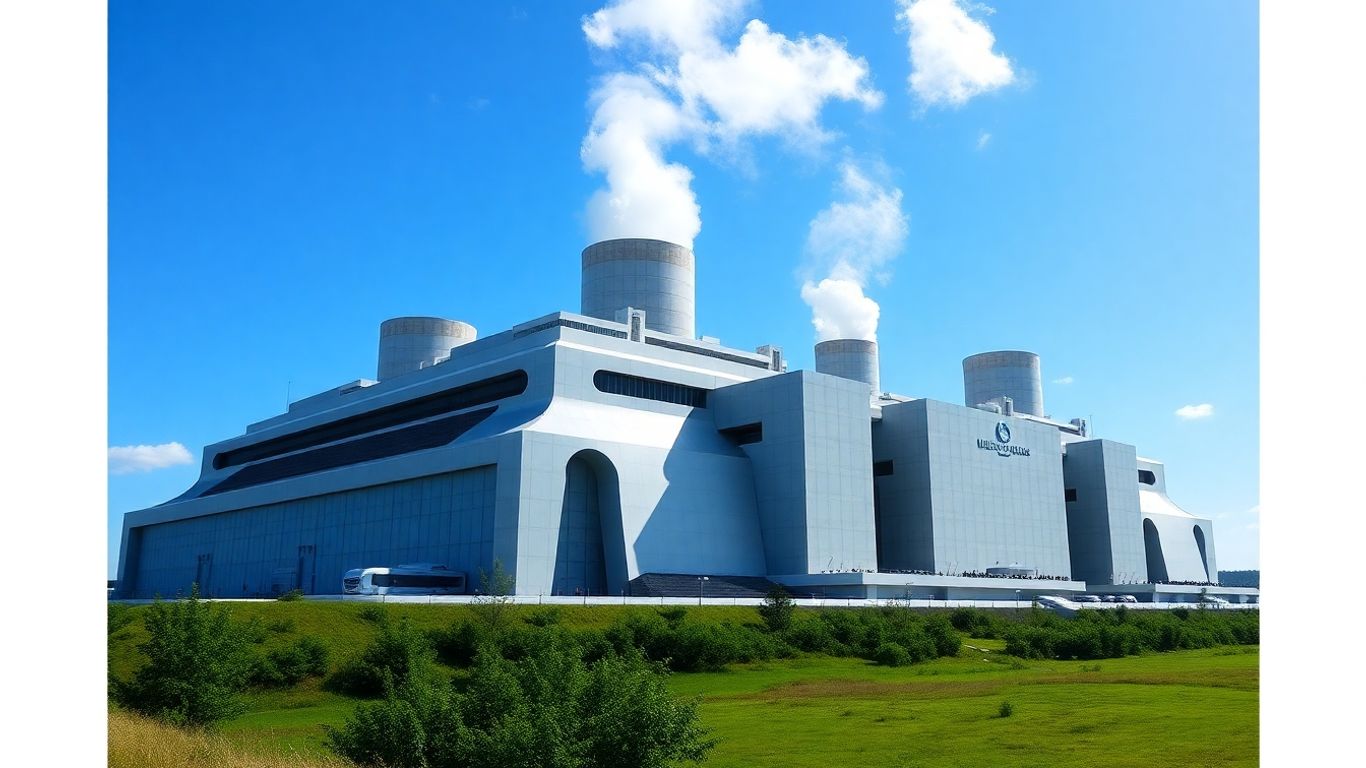The Tennessee Valley Authority (TVA) has submitted a construction permit application to the U.S. Nuclear Regulatory Commission (NRC) for one of the nation’s first small modular reactors (SMRs). This move marks a significant milestone, potentially paving the way for other utilities to adopt similar advanced nuclear technology. The proposed reactor, a GE Vernova Hitachi BWRX-300 design, is slated for the Clinch River site near Oak Ridge, Tennessee.
Key Takeaways
- TVA is the first U.S. utility to apply for a construction permit for an SMR.
- The application is for GE Vernova Hitachi’s BWRX-300 design.
- The proposed site is TVA’s Clinch River facility.
- This initiative could accelerate the deployment of SMR technology across the U.S.
A New Era for Nuclear Energy
TVA’s application submission to the NRC in late May signifies a critical step in bringing advanced nuclear power online in the United States. The utility has already secured the nation’s first early site permit for an SMR, with support from the U.S. Department of Energy, clearing the environmental review process. The next phase involves a comprehensive safety review of the reactor design before construction can commence.
Don Moul, TVA President and CEO, expressed enthusiasm for this development, stating, "This is an exciting step to bringing the nation’s first utility-led SMR online." He added that TVA’s pioneering role in seeking a construction permit for the BWRX-300 will establish a pathway for other utilities, bolstering energy security and reliable electricity.
The BWRX-300: A Glimpse into the Future
The BWRX-300 is the sole boiling water SMR design currently under development in the United States. This 300-megawatt-electric advanced light water system is a more compact and simplified version of GE Vernova Hitachi’s established Economic Simplified Boiling Water Reactor. It is designed to leverage existing supply chains, potentially speeding up its deployment.
In 2023, TVA joined a global collaboration with Ontario Power Generation to accelerate the development of this SMR technology for both the U.S. and Canada. Notably, four BWRX-300 reactors have already been cleared for construction in Clarington, Ontario, with commercial operation anticipated by the end of 2029.
TVA anticipates that preliminary site preparation work could begin as early as next year, while the NRC conducts its review of the construction permit application. The U.S. Department of Energy is actively supporting the deployment and export of next-generation nuclear power systems like SMRs to provide more affordable, reliable, and secure energy.
Potential Timeline and Considerations
While TVA initially estimated a two-and-a-half-year timeline for permit approval, an executive order aimed at expediting nuclear project permits could potentially allow TVA to receive its official permit by December 2026. Construction is tentatively expected to begin in January 2026, with the SMR potentially becoming operational by late 2032.
Small modular reactors offer advantages such as improved safety, efficiency, and a smaller carbon footprint compared to traditional nuclear plants. Their modular construction, akin to assembling Lego blocks, allows for easier deployment and can be situated in locations not suitable for larger reactors. Unlike conventional plants with extensive evacuation zones, SMRs typically have a site boundary as their impact zone.
However, some critics, like Edwin Lyman of the Union of Concerned Scientists, have raised concerns that political pressure to expedite reviews could compromise safety, emphasizing the complexity and uncertainties involved in these advanced technologies. Despite these concerns, the project has garnered bipartisan support, driven by the demand for clean, firm power and the growth in sectors like data centers and electrification.
### Sources
- NRC Dockets Construction Permit Application for TVA Small Modular Reactor, Department of Energy (.gov).
- TVA’s Progress Towards Small Modular Reactor | Local News, Local 3 News.
- For the first time, a U.S. utility seeks permit to build small modular reactor, Power Engineering.












